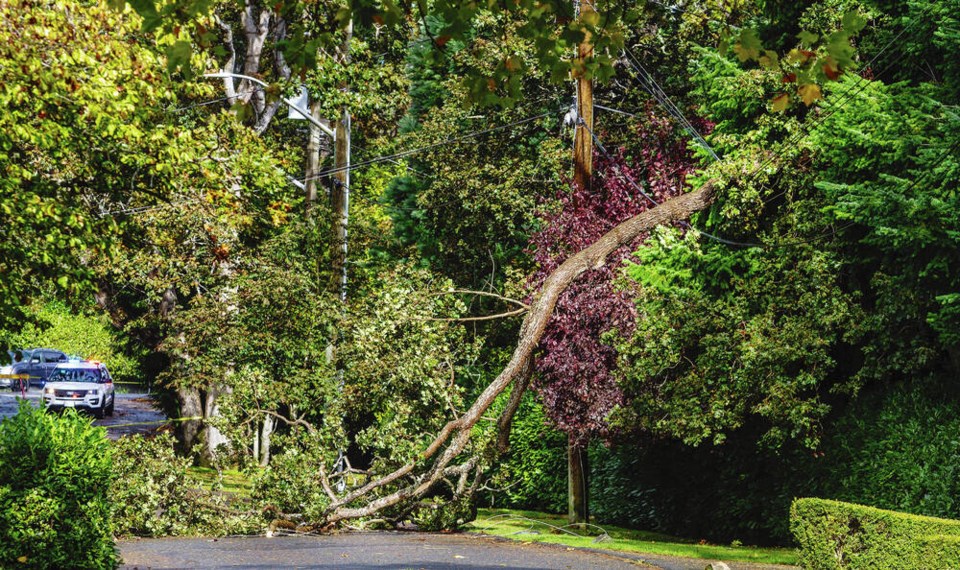This story is part of a series exploring the wide-ranging impacts of persistent drought conditions and climate change seen across the province in recent years.
During severe storms, trees and branches often crash onto power lines, knocking out electricity for hours and sometimes days.
That’s nothing new. But chronic drought is stressing some trees — such as water-loving cedars — to the point that they’re much more vulnerable during extreme weather.
“Certainly with the changing climate, the drought conditions are severe,” said B.C. Hydro spokesman Ted Olynyk.
“On Vancouver Island, we are seeing this prolonged dry weather that’s not typical and the vegetation [that has] evolved isn’t designed for it.”
Trees become more susceptible to disease and damage after experiencing extra-long hot, dry summers.
The conditions also make it easier for branches to “take flight” and crash onto power lines during fall and winter wind storms.
Adverse weather, particularly wind, and falling trees and branches, causes more than half of B.C.’s power outages, according to a 2023 report from B.C. Hydro on the worst storms in the province in recent years.
Drought damages trees, leaving them susceptible to wind, which can send them onto electrical infrastructure.
The report points to a survey that found three in five B.C. residents say the worst fall and winter storm they have experienced happened within the previous five years.
Those who live in the Lower Mainland and Vancouver Island are the most likely to say storms are becoming more frequent and severe — likely because most of the top storms affected their regions, the report says.
A severe windstorm in December 2018 resulted in power cuts to 750,000 people on B.C.’s south coast.
After a year of record drought, an early-November windstorm in 2022 left 420,000 customers without power in the Lower Mainland, Sunshine Coast, the Gulf Islands and Vancouver Island, while a wind storm last fall cut power to 235,000 on the Island and South Coast, the report says .
The “atmospheric river” and flooding in November 2021, meanwhile, led to 217,000 households losing power, and caused highway damage on the Island, Lower Mainland and up to the Cache Creek area and east to Princeton.
B.C. Hydro spends tens of millions of dollars annually dealing with vegetation-related problems and anticipates costs will continue to grow.
Between fiscal years 2012 and 2021, B.C. Hydro spent about $50 million on managing vegetation. That rose in 2021-2022 to about $60 million to $65 million due to B.C. Hydro’s system growth, Olynyk said.
Now the pre-inflation annual budget for fiscal years 2023 to 2025 is projected to be in the $75-million to $90-million range, he said.
Apart from trying to reduce tree-related outages during storms, B.C. Hydro has stepped up efforts to address wildfire risks and damage caused by invasive species.
Forecasts for 2026 to 2029 anticipate that the annual budget to manage vegetation will reach about $150 million per year, Olynyk said.
B.C. Hydro has a four-year inspection cycle of its power lines to reduce the danger of vegetation affecting reliability of power transmission. Inspections take place on the ground, and aircraft regularly fly over transmission lines around the province.
B.C. Hydro recommends residents make up emergency kits with enough supplies to last 72 hours in case of a power outage.











